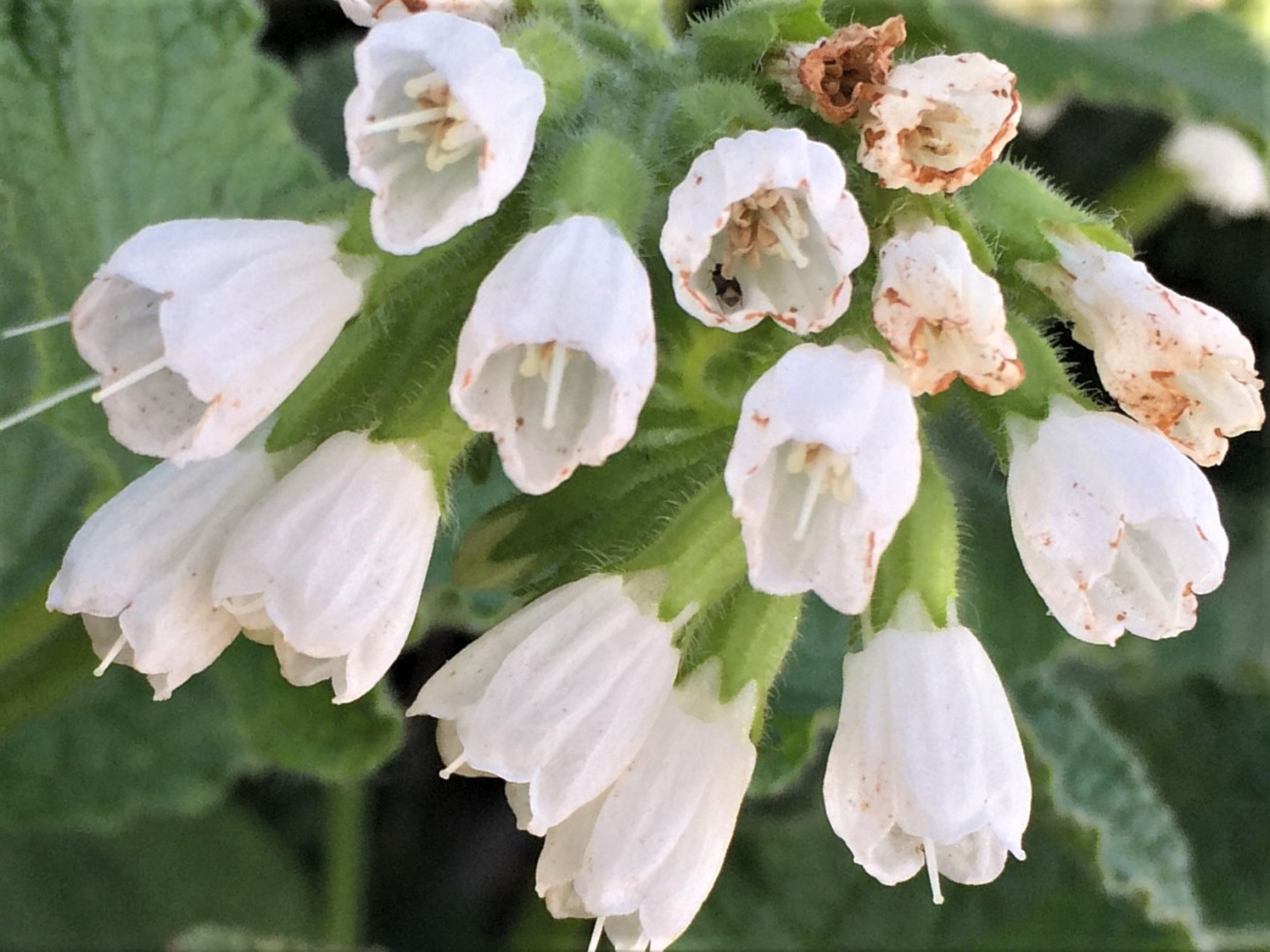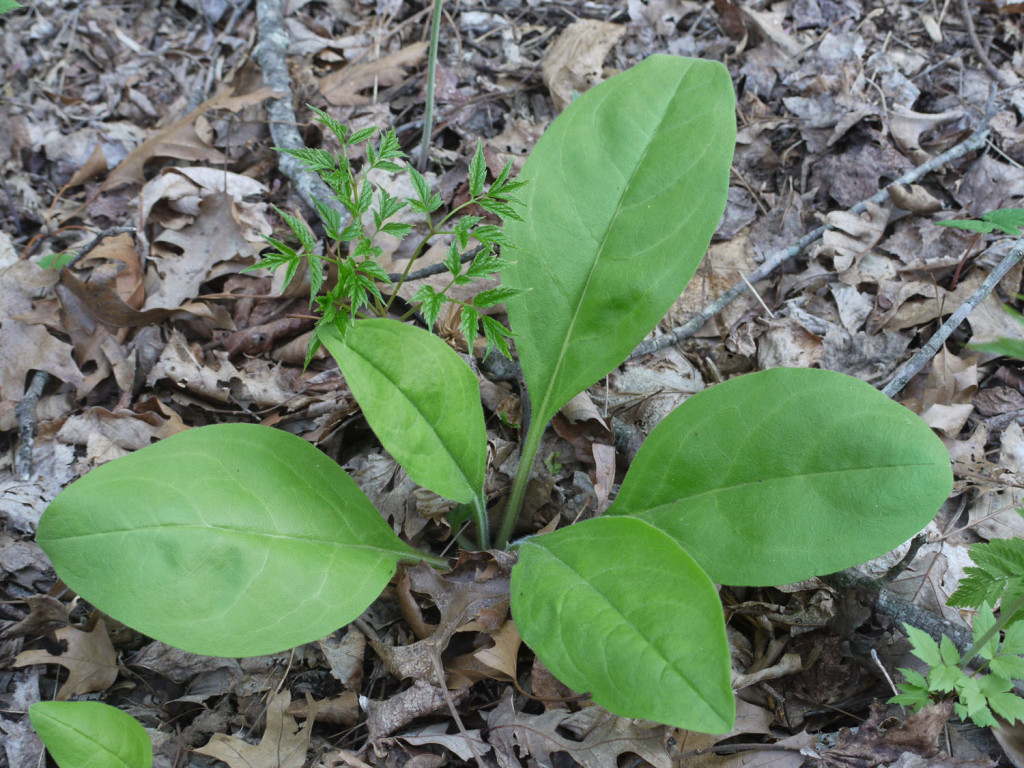
So sowing is not always successful, but for those who like to try, it is worth a try. Comfrey germination can be relatively irregular and can take up to 20 weeks. If seeds were formed after all, you can collect the whole seed stalks (cloistered fruits) in the fall, dry them, and store them until you sow them in the spring. The flowers are often sterile and do not produce seeds, so propagation is usually done vegetatively via runners from the rhizome. Once Beinweill is established, it is difficult to transplant due to its deep taproot. From May, the young plants can then be placed in their final location. After three weeks, transplant the young perennials into more nutrient-rich soil. As an alternative to growing in pots, comfrey can also be sown directly in the open from April.

Use low-nutrient growing soil for cultivation, so the sprouts develop best. It is done in the fall in pots, which overwinter in the cold frame, or in March on the warm windowsill. Sowing comfrey is also generally possible. Plant individual perennials 40 x 50 cm apart. When planting, you should dig a generous planting hole and fill it additionally with potting soil. Pre-grown seedlings can be obtained at any well-stocked nursery or garden center. Usually, part of the root (with buds) is cut off with a sharp spade in spring and transplanted. The most common method is vegetative propagation by cutting off root stolons in the spring or after flowering in the fall. The plants have a great regenerative power, individual root pieces grow into strong new plants. If you already have a perennial, you can easily propagate it. Ensure good drainage and use a mixture of garden soil and sand as substrate. Plant & PropagateĬomfrey tends to sprawl due to its underground runners and can therefore also be grown in large containers. Also on the banks of ponds or next to the compost heap are optimal conditions for comfrey.

Comfrey is well suited as an underplanting of shrubs and trees. The location should be moderately dry to moist, very dry places in the garden are rather unsuitable for the wild plant. A loamy, nutrient-rich and humus-rich soil is ideal for the perennial. LocationĬhoose a sunny to semi-shady location for your comfrey plant. The hardy perennial was already valued by the Romans as a medicinal herb and could not be missing in the medicinal garden of Hildegard von Bingen. In general, it prefers rather moist areas and therefore often grows along streams or ponds. As a native wild herb, it can be found in species-rich meadows and along forest and roadsides. OriginĬomfrey is native to all of Europe from the Mediterranean to the Caucasus. Propagation is usually vegetative via runners of the rhizome. If fertilization does occur, so-called cloistered fruits develop, which disintegrate into egg-shaped partial fruits. The flowers are often sterile and do not form seeds. The flowering period extends from May to September. They are pollinated almost exclusively by bumblebees and large wild bees, as these are specially adapted to the flower shape with their long proboscises. The inflorescences are arranged in clusters and bear pendulous, bell-shaped individual flowers. The flower color varies from white, purple, blue or pink, depending on the variety. The large leaves of the comfrey plant are oval-lanceolate and pointed at the front, they grow up to 25 cm long. It is used primarily for medicinal purposes. The main root is a taproot and grows up to 50 cm long, it is dark brown-black outside, but white and mucilaginous inside. The stem and leaves are bristly-haired, and the whole plant forms clumps with underground creeping stolons. It grows to about 50 – 80 cm tall and 30 – 40 cm wide. What does comfrey look like?Ĭomfrey is a herbaceous perennial perennial that dies above ground in winter and sprouts again in spring. However, the rough-leaved plant also cuts a good figure in the ornamental garden with its appearance. It is used for broken bones, bruises and haematomas and is therefore mainly grown for medicinal purposes. Many names already indicate its use as a medicinal plant.Ĭomfrey is mildly toxic and has analgesic and anti-inflammatory properties when used externally.

It is known by many names: True Comfrey, Common Comfrey, Medicinal Comfrey, Comfrey, Fracturewort, Legwort, Painwort, or Comfrey. Comfrey (Symphytum officinale), like forget-me-not (Myosotis), bee-lover (Phacelia tanacetifolia) and viper’s bugloss (Echium vulgare), belongs to the Boraginaceae family.


 0 kommentar(er)
0 kommentar(er)
